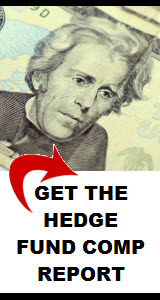Who are these four horsemen? Pitiful performance, available alternatives, reduced fees, and impatient investors.
Abysmal hedge fund performance has been the norm for the past five years. Hedge Fund Research reported the global hedge fund composite to be down almost 1.2 percent when averaged over the past five years. Contrast this with the S&P 500, which is up more than 11 percent over the same period. Then there is the US bond aggregate which, according to Barclay’s, has seen gains of 3.6 percent over the same 60 months.
Hedge funds are not the only game in town. Liquid alternatives, the aforementioned bond market, and private equity firms are among the many investment opportunities prepared to usurp hedge funds as the investment vehicle of choice.
Incredibly, most available investment vehicles sport lower total fees than those charged by hedge fund firms.
Lastly, investors of all stripes are beginning to lose patience with underperforming hedge funds. Hedge funds that receive hundreds of thousands, if not millions of dollars, in management fees and earn nothing by way of performance fees are becoming the norm rather than the exception. Examples of this impatience include public pension funds like CalPERS and NYCERS. New Jersey legislators are contemplating a prohibition on alternative fund investment, which would include hedge funds. Massachusetts and Illinois are pursuing a similar path. However, insurance giants such as AIG and MetLife are also fleeing hedge funds. Pension funds and other large institutional investors represent 43.1 percent of hedge fund assets under management. Three years ago that number stood at 47 percent.
Is This a Trend?
Although these numbers suggest a trend, it is by no means confirmed to be one. The most telling story to follow is the one that reveals the eventual outcome of these high profile redemptions. Will these entities achieve superior results with other investment vehicles or will they discover that they zigged when they should have zagged?
What Is Certain?
Hedge funds are under enormous pressure to boost performance. Hedge fund fee structures, under attack for years, are also an increasing concern for potential investors. While the 2 and 20 model succumbed to pressure years ago, (1.3 and 15 is the current average) hedge fund fees remain at the apex in the investment world.
If hedge funds are to survive and thrive in the current economic climate, they must develop strategies that produce the gains investors will accept, coupled with fee structures that are reflective of fund performance.
What about Hedge Fund Jobs?
Many in the hedge fund industry predict dramatic reductions in the total number of hedge fund firms over the coming years. This is not an unreasonable forecast given recent events. However, diminishing numbers of firms does not automatically translate to fewer opportunities in the industry.
The 2016 Hedge Fund Compensation Report offers unique insights into the mindset of hedge fund professionals. One of the most telling sections of the report deals with job security concerns. Remarkably, only 27 percent of those responding cited performance as an issue and just 52 percent expressed any concern about job security.
Unless the aforesaid 52 percent wake up and smell the coffee, those predicting an apocalypse may be proven correct.






Comments on this entry are closed.